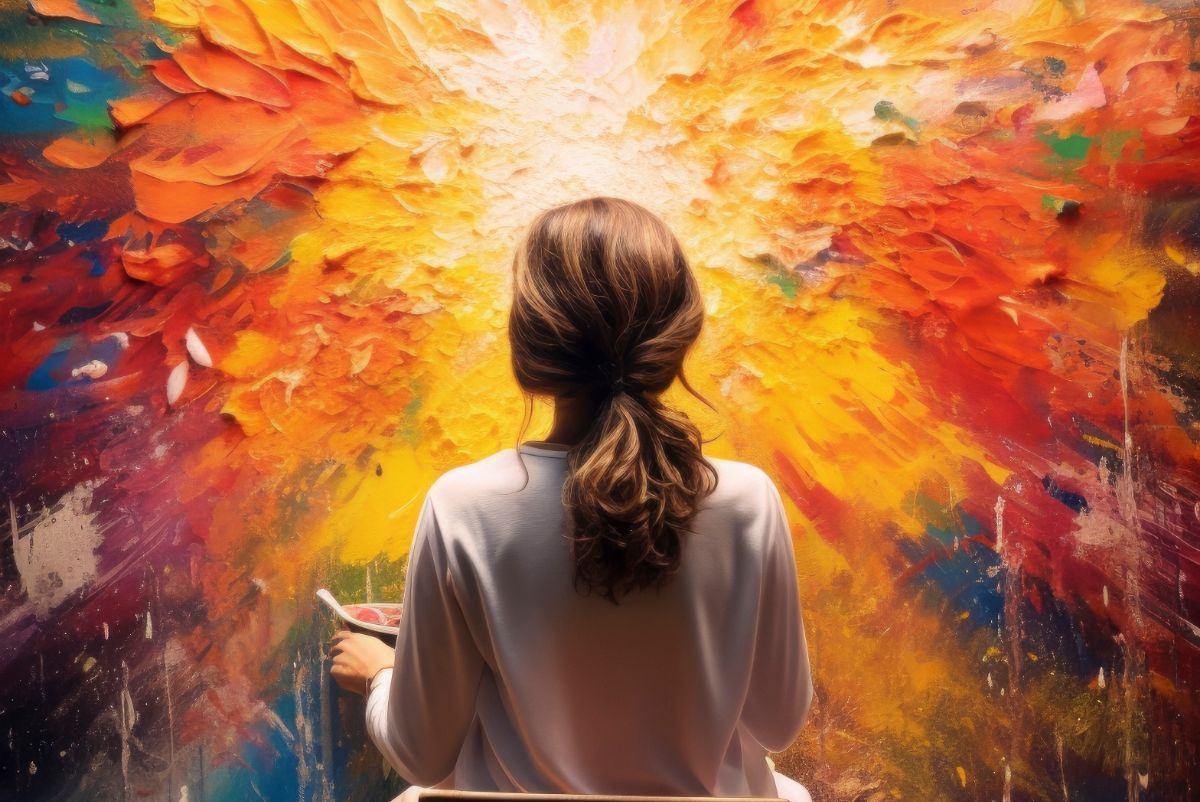Art has long been considered a powerful medium of expression, capable of capturing human experiences in ways that words sometimes cannot. While art is often associated with aesthetics and creativity, its impact on mental health has garnered increasing scientific attention. In recent years, a growing body of research has demonstrated that engaging in artistic activities—whether painting, drawing, sculpting, or other forms—can have profound effects on psychological well-being. This article delves into the evidence supporting art’s therapeutic potential, drawing on neuroscience, psychology, and clinical studies to explore how and why art can serve as a tool for mental healing.
Art as a Form of Emotional Expression
At its core, art is a form of communication. When individuals engage in artistic activities, they are often expressing emotions, thoughts, and experiences that may be difficult to articulate verbally. Psychologists believe that this non-verbal expression is crucial for processing emotions, especially those related to trauma, grief, or stress. The therapeutic process of externalizing internal experiences through art helps individuals to better understand and regulate their emotions.
Research on art therapy—a structured form of psychotherapy that uses art as a means of communication—supports the idea that creating art helps with emotional regulation. A 2016 study published in the journal Art Therapy found that participants who engaged in just 45 minutes of art-making experienced significant reductions in cortisol levels, a hormone associated with stress. These findings suggest that art can function as a buffer against emotional distress, offering a tangible way for people to process negative emotions.
Neuroplasticity and the Brain’s Response to Art
One of the most compelling scientific explanations for art’s healing power lies in the concept of neuroplasticity. Neuroplasticity refers to the brain’s ability to reorganize itself by forming new neural connections in response to learning or experience. Engaging in creative activities stimulates various areas of the brain, particularly those involved in memory, problem-solving, and emotional processing.
Neuroimaging studies have shown that making art activates regions of the brain associated with reward and pleasure, such as the prefrontal cortex and the ventral striatum. This activation not only enhances mood but can also serve as a form of emotional reinforcement, encouraging continued engagement with creative activities. By participating in art, individuals are not just expressing themselves but actively reshaping their brain’s emotional and cognitive circuits, leading to long-term improvements in mental resilience.
Art Therapy and Trauma Recovery
Art therapy has shown particular promise in the treatment of trauma. Traumatic experiences, especially those related to post-traumatic stress disorder (PTSD), often disrupt memory and emotional processing. Traditional talk therapies can be effective, but many individuals struggle to verbalize their experiences, especially when the trauma is deeply embedded in non-verbal parts of the brain.
Studies have demonstrated that art therapy can help trauma survivors access and process traumatic memories in ways that are less re-traumatizing than verbal approaches. By creating visual representations of their experiences, individuals can work through complex emotions and regain a sense of control over their narratives. A 2014 study published in the Journal of the American Art Therapy Association found that art therapy led to a reduction in PTSD symptoms and improvements in mood among trauma survivors, suggesting that it can serve as a valuable adjunct to traditional therapeutic interventions.
Creativity and Cognitive Flexibility
Engaging in creative activities not only aids emotional expression but also promotes cognitive flexibility, the ability to adapt one’s thinking in response to new or changing situations. Creativity requires individuals to think in divergent ways, exploring multiple possibilities and generating novel solutions. This cognitive flexibility is not only essential for problem-solving but also plays a role in mental health by helping individuals shift their perspectives and cope with life’s challenges more effectively.
A study published in Frontiers in Psychology in 2017 found that individuals who regularly engage in creative activities report higher levels of psychological well-being and resilience. The researchers concluded that creativity fosters adaptive coping mechanisms, allowing individuals to approach problems with an open mind and reduced emotional reactivity. For those struggling with anxiety or depression, this ability to think flexibly can be a critical component of recovery, as it promotes a sense of agency and reduces feelings of helplessness.
Group Art Therapy: Social Connection and Healing
Art can also play a powerful role in fostering social connection, an important aspect of mental health. Group art therapy sessions offer individuals the opportunity to create in a collective space, providing both individual expression and shared experiences. The social nature of these sessions has been shown to reduce feelings of isolation, particularly in individuals who may feel disconnected due to mental health conditions.
In a 2018 study published in Psychological Research and Behavior Management, group art therapy was found to improve self-esteem and reduce depressive symptoms in participants. The study suggested that the act of creating art alongside others encourages a sense of community and belonging, which can be particularly beneficial for those recovering from depression or trauma. The shared experience of art-making allows participants to express vulnerability in a non-verbal way, creating a bond that promotes emotional support and empathy.
Conclusion: Art as a Pathway to Psychological Resilience
The healing power of art is not a matter of mere intuition or anecdote—it is supported by a wealth of scientific evidence. By engaging the brain’s emotional and cognitive systems, promoting neuroplasticity, and fostering emotional expression, art can be a powerful tool for mental health. Whether used as a form of therapy or as a personal practice for stress reduction and emotional balance, creating art offers individuals a unique pathway toward healing.
In a world where mental health challenges are increasingly common, the therapeutic value of creative expression cannot be overstated. For those seeking non-verbal ways to process emotions, navigate trauma, or simply find calm amidst the chaos of everyday life, art provides a scientifically validated route to psychological resilience and well-being.


